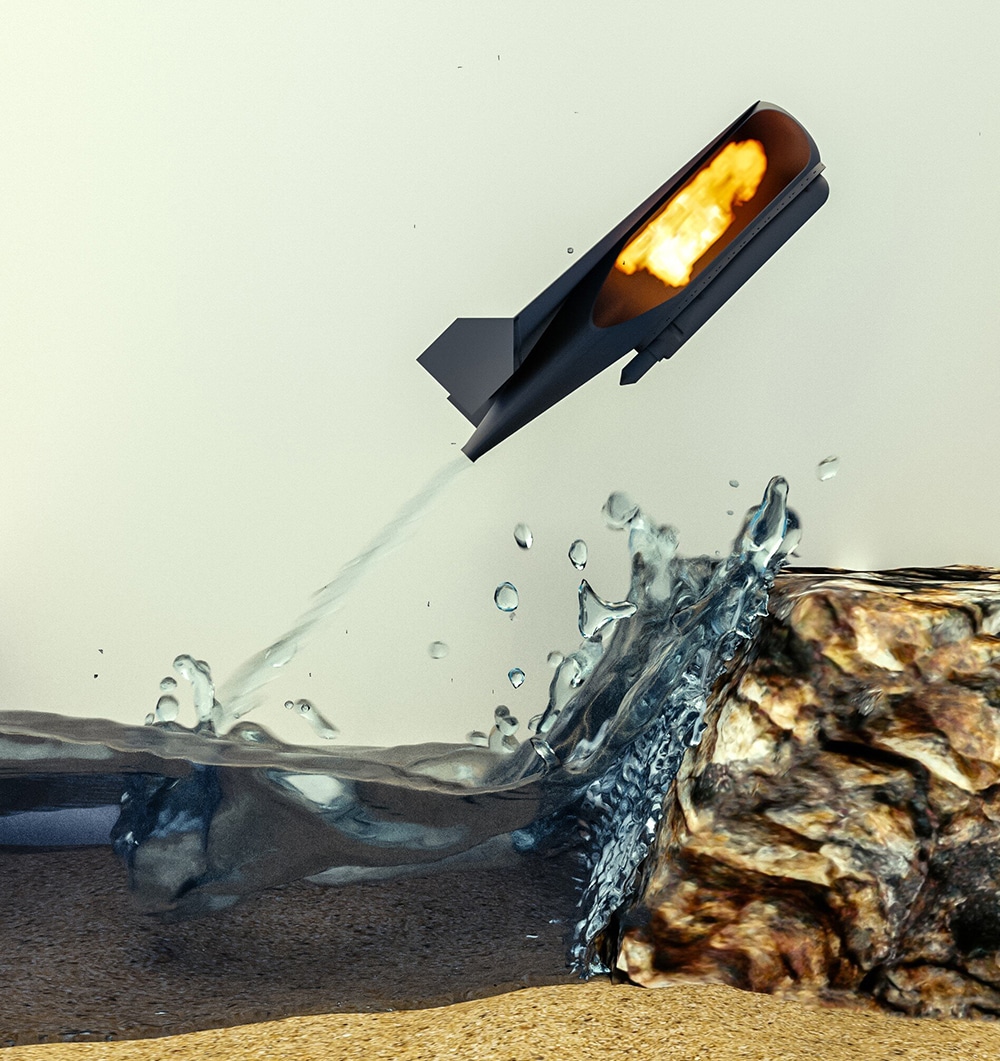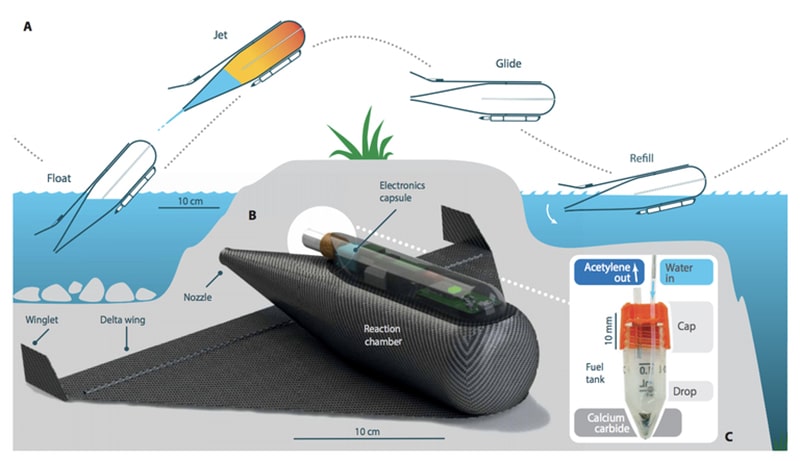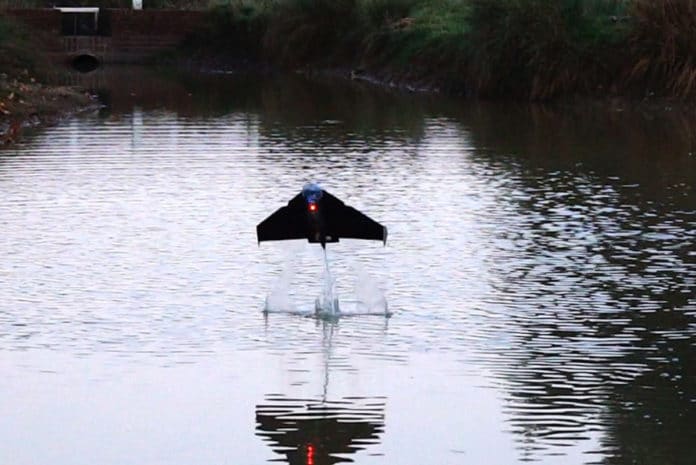Over the past few years, we have seen numerous nature-inspired robots developed for several important tasks. Now, researchers at London and the Swiss Federal Laboratories for Materials Science and Technology have developed a robot inspired by the ‘flying fish.’
This tiny “flying fish” robot can use water to create a gas and launch itself from the water’s surface.
A small aerial-aquatic glider, which can fit in the palms of your hands, uses chemical reactions to get out of the water. This robot can travel 26 meters through the air after take-off, could be used to collect water samples in hazardous and cluttered environments, such as during flooding or when monitoring ocean pollution.

The more interesting part of the robot is its propulsion system. The robot pumps water from the environment into a reaction chamber, containing calcium carbide powder. Water and calcium-carbide powder mix together, creating acetylene gas that is forced into the main chamber and ignited. The force of this ignition quickly expels water in the chamber, sending the vehicle into the air.
This propulsion allows the robot to glide in the air for up to 85 feet (26 meters). The new flying fish robot weighs just 160 g (5.6 oz) and is packed with just 0.2 g (0.007 oz) of calcium carbide powder.

The robot can jump multiple times after refilling its water tank. This, according to the researchers, allow it to float on water and take samples at multiple points without additional power, saving energy over longer distances compared to an electrically powered robot.
The team has tested the robot in a lake and a wave tank showing that it can escape from the water’s surface even under relatively rough conditions. The team’s invention generates a force 25 times the robot’s weight, giving it a greater chance of overcoming the waves.
